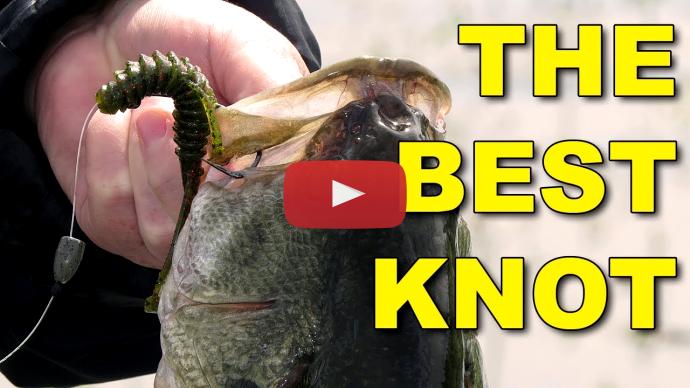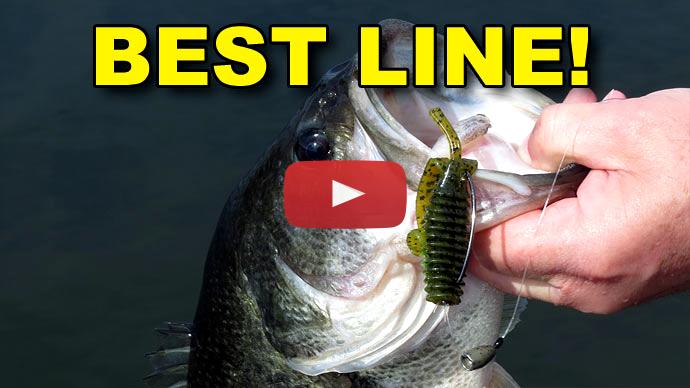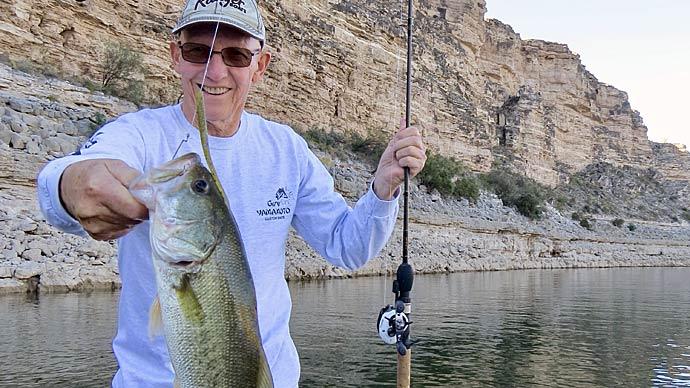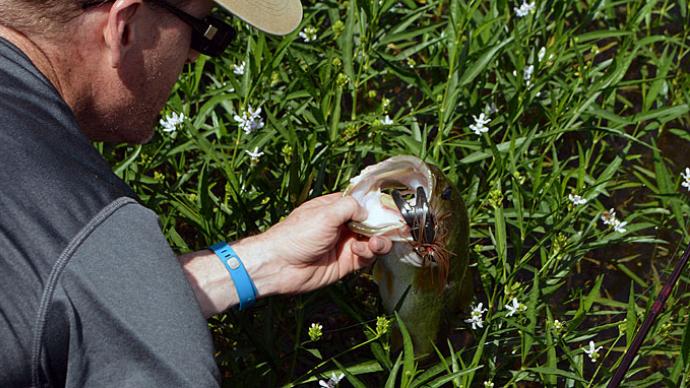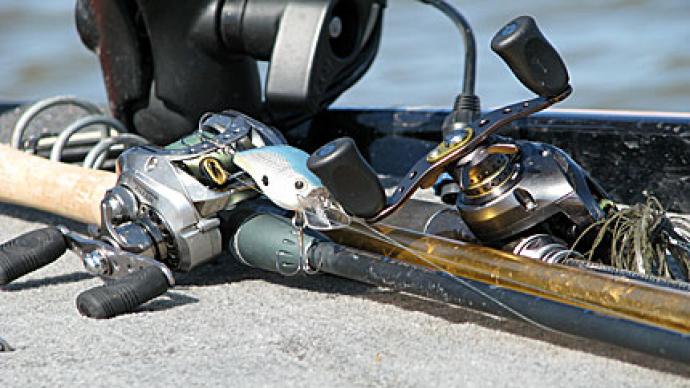Hi, I'm Aaron Martins here with Limit Out Marine in Washington. I'm going to show my knot that I use. It's an old saltwater knot. It's called a uni. You can call them Razo knot. Razo takes a little bit of credit for it, but I think a lot of salt water guys always double their knots. Basically it's a uni knot doubled, with the line doubled. It makes you able to do it on the drop shot rig. If you do it singly, you've got a long tie again, but if you double it, you have a short loop.
Right here I have some high-colored high-vis braided line and a really big hook so you can see good. Probably right in this area is good for you. Pretend this is my main line here. It's main longer. Take it and double it up. What I do is when I take that loop and double up with fluorocarbon or braid, too. That works good with everything.
I usually give it a little pinch. Obviously this is big stuff and this is a big hook, but with the smaller lines I just give a pinch so it's easier to get in the eye of the hook. Once I do that, you're going to slide it like so. Give yourself enough line. That's the most important thing you want to do is don't give yourself like that much because you'll make it really hard on yourself. Give yourself, especially starting out with this knot, give yourself a lot of material to work with.
Here is your main line. The tag end's right here. All right, grab it like so. Usually by now I'll grab my main line, my tag in, which is a loop that came through. I made that loop. I'm going to grab this loop and slide the hook up, holding this piece the tag in the main line. With my same hand...That's the hardest part about this knot you're going to find is hand position. I take my right hand and my pinkie and whatever finger this is called, and then hold it there. Hold it tight.
I'm not really holding the hook. The hook I'm just holding wherever the eye is at. Then you take these two fingers on your right hand. This is how I do it. You might have a better way. When I take it I kind of turn it downwards. This just makes it easier to do your loops. What I'm going to do now is I'm holding it with both hands. You're going to have to watch this video over and over again.
What I'm going to do is I'm going to wrap up...My loop's a little long but, if you're following, and anywhere between six and seven or eight wraps on fluorocarbon. This is only like five wraps but...Braided lines, lighter stuff I use 12 wraps and the heavy stuff I use 10-11, or even 12 wraps. It's really good with braid. It's really good with fluorocarbon. This is the strongest knot I've found so far.
If there's a better one out there, please let me know, but this is the strongest knot I've found. It really is close to 100 percent knot strength. You saw how I just cinched that tight, kind of pulled on the hook a little bit, pulled on the main line and the loop a little bit at the same time. Once you cinch it down like so, you want to make sure...See that little piece how it kind of made a loop? You want to make sure you pull those at the same time.
You can fix this knot. If you mess it up, you can usually fix it. Now I'm pulling the tag end and the main line, and you just slide it down. It's actually not really called a knot. This is called a cinch. Once you get to that point you cinch it down really tight and it makes a really nice tight knot. When you're done, you're going to cut that loop and the tag end off, and that leaves you with a nice tight uni. That's it. Just practice makes perfect.
Takes a long time to be efficient at it, but once you are it's actually as fast as a Palomar. I've tied it with one of the anglers back East. Kevin Wiggins? Well I forgot his name, but he's really good with a Palomar, and we tied our knots together. Mine was the same time as his, and he ties a Palomar all the time. Once you get efficient at it, it isn't that much more time to tie it, and it's a lot stronger. Try it out. That's it.

